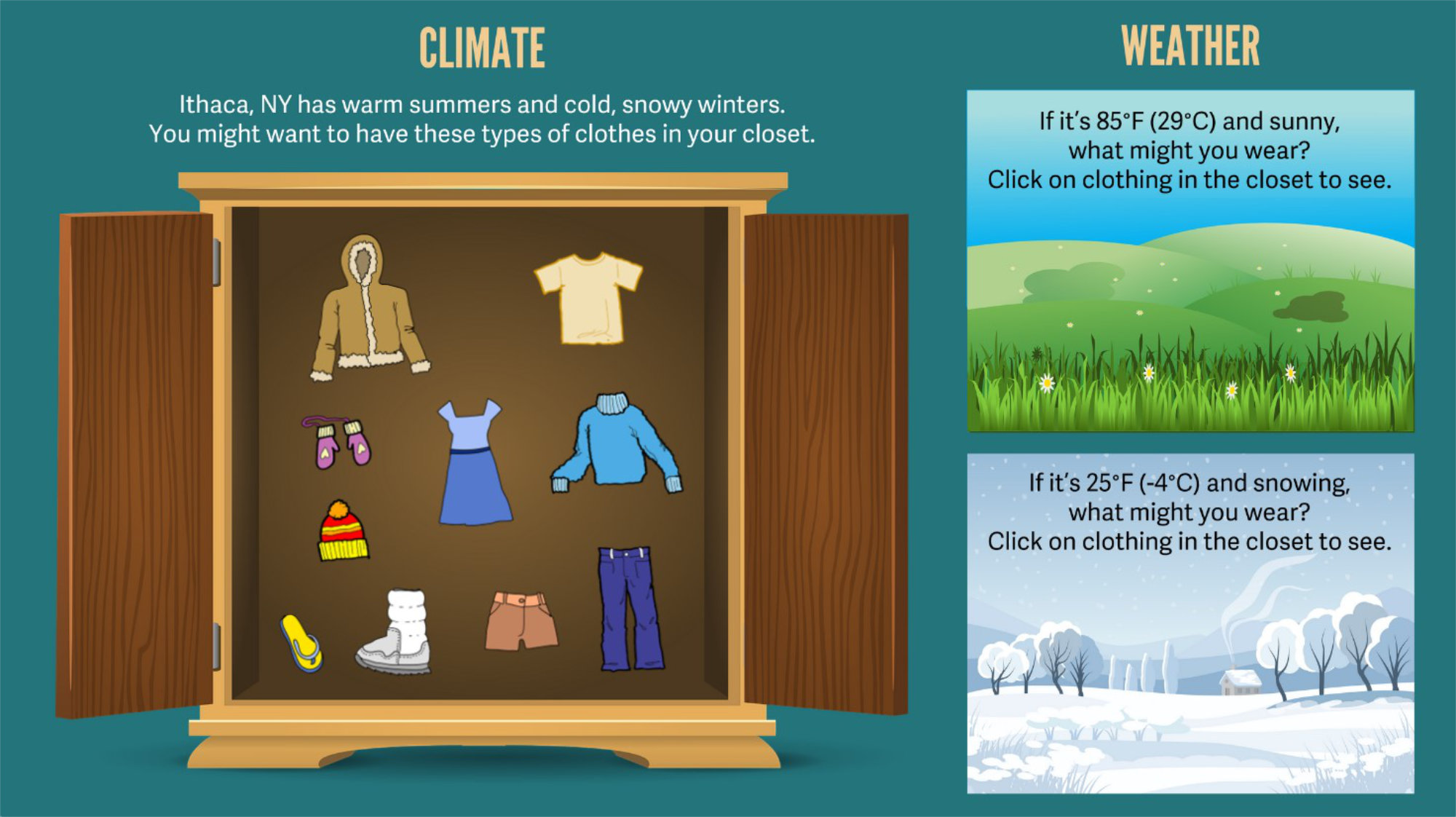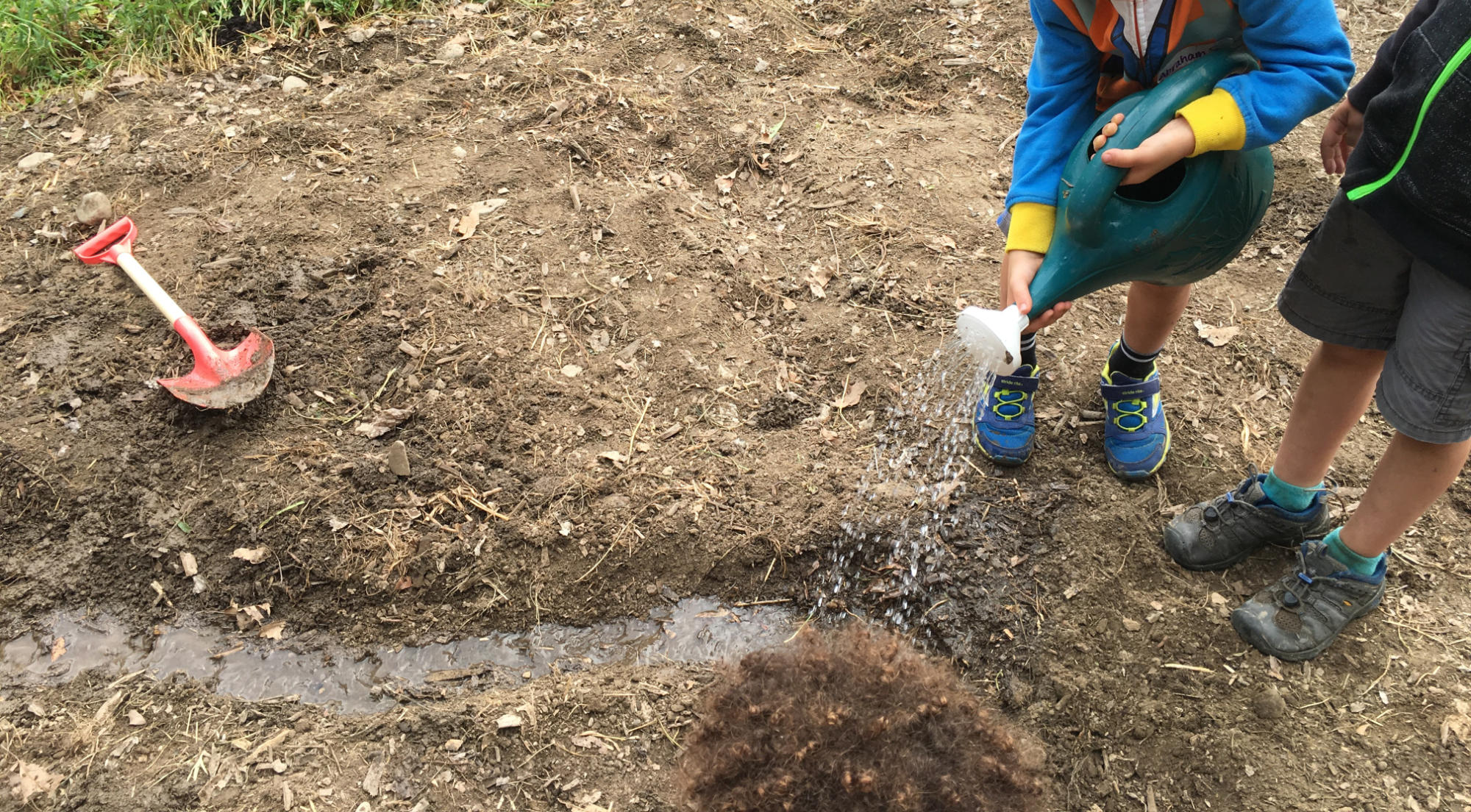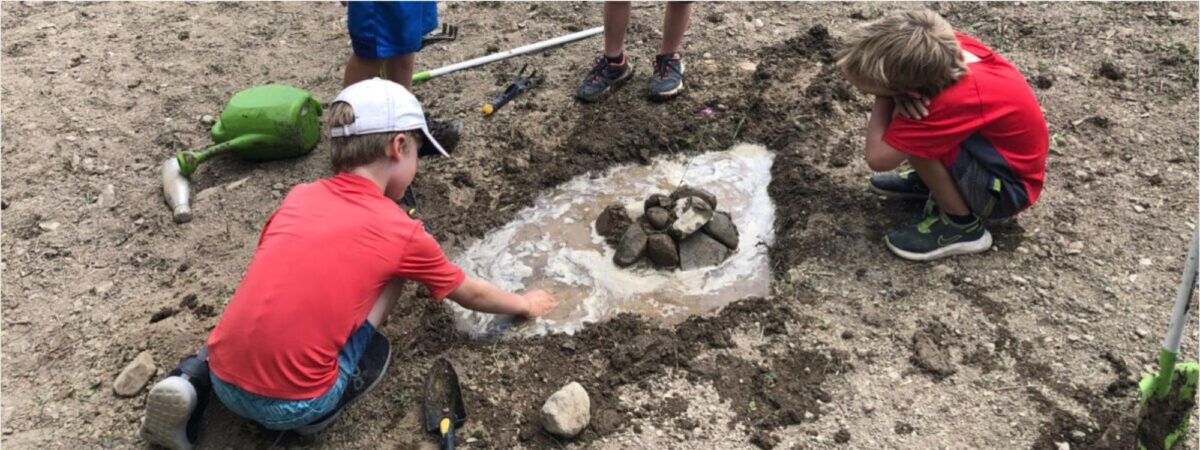Overview
Our climate is changing, and most parts of the United States are experiencing more heavy rainfalls than in the mid-20th century, as a result of a warming atmosphere. Heavy downpours can lead to flooding, which can be catastrophic. We need to reduce our greenhouse gas emissions to slow or stop the atmosphere from heating up, and we also need to learn to cope with climate change and become more resilient to climate hazards. This activity focuses on adapting to climate change and building resilience to heavy rainfalls, in the context of a garden.
Introduction
This activity allows students to devise, create, and test ideas for protecting a garden from heavy rains.
Grade Level
K-5
Learning Objectives
Students will
- learn through play (digging in dirt)
- learn that our climate is changing
- problem solve and be creative
- build and test ideas
- observe how water and soil interact
Lesson Format
This activity is intended to be done outdoors. You will need a patch of soil for kids to dig in, and access to water. Kids will likely get wet and messy!
Time Required
45 minutes
Standards
NGSS
- Generate and compare multiple solutions to reduce the impacts of natural Earth processes on humans. 4-ESS3-2
- Make a claim about the merit of a design solution that reduces the impacts of a weather-related hazard. 3-ESS3-1
- Compare multiple solutions designed to slow or prevent wind or water from changing the shape of the land. 2-ESS2-1
Credits & Contact Info
Dr. Ingrid Zabel
Paleontological Research Institution, 1259 Trumansburg Rd., Ithaca NY 14850
zabel@priweb.org
Instructions & Materials
Materials
- Access to a patch of soil
- Access to water
- Garden implements for digging: shovels, trowels, and/or hoes
- Watering cans or hose (something to simulate rain)

Instructions
Introduction (10-15 minutes)
Outdoors at a garden plot with soil that is ready to dig, begin discussing background information. Explain that you’ll tell the students about a problem and ask them to think of ideas to solve it. Then they’ll get to build their ideas and test them.
- The problem has to do with climate change. Ask if anyone knows what climate or weather is; help define climate.
-
- Weather is the temperature, rain or snow, wind, and humidity that we feel every day when we go outside. Weather can change from minute to minute and hour to hour.
-
- Climate is the long-term pattern of weather that we have where we live, both averages and extremes. It’s helpful to give examples, for instance, in New York State our climate has warm summers, sometimes with really hot days, and cold winters, often with snow. Other places in the world have very different climates, for example, they could be warm all year round and have wet and dry seasons.
-
- A practical way to think about the difference between weather and climate can be to think about clothing. Knowing the weather tells you what clothing you should wear today. Knowing the climate where you live tells you what clothing you should have in your closet, for the entire year.

- Explain that the climate is changing now all over the world, including here. It’s getting warmer. That can be helpful and harmful for gardens and farms.
-
- Helpful: we might be able to grow fruits or vegetables that do well in hot weather and that we haven’t been able to grow before. We might be able to grow food for a longer time during the year, because spring comes earlier and winter weather starts later.
-
- Harmful: we might not be able to grow crops that we’ve grown in the past because they can’t tolerate higher temperatures. Insects from warmer climates might move in and attack crops. We can expect more drought, because warmer air dries out the soil through evaporation. When we do get rain, we can expect more heavy rainfalls: times when we get a lot of rain falling in a short time.
- Heavy rain is the problem we’ll focus on today. Ask how this could harm a garden.
- Key points: plants need water but they don’t do well with too much water. If rains are so heavy that the garden floods, the plants could be damaged or die.
- Pose the question to the students: if this were your garden plot and you had some tools, what could you build to prevent your garden from flooding during a heavy rain?
- If they’re struggling to come up with ideas, you may need to ask the question in a way that leads them a bit more , such as “what could you build to move water away from plants growing in the garden?”
Discussion of ideas for solutions (10 minutes)
Listen to students' ideas, help refine or summarize them if the children are having trouble, etc. Sometimes children may describe an idea but not know a name for it, for example, children might describe ditches, channels, or trenches but not know what to call them.
Examples of ideas that children have come up with in the past:
- Drainage channels
- Moats
- Raised areas for plants with moats around them
- Dams
- Deep holes to soak up water
- Collecting water in a container
- Moving the garden
- Using a greenhouse instead of an open garden
- Covering the garden with a material that would let some, but not all, the rain through
Some of these solutions can’t be implemented with the tools for this program, so redirect the children to thinking about what they could do with the tools available and the garden plot as it is (i.e., not moveable). If your garden plot is on a slope, children may talk about how water would run downhill, and how one could use that feature.
- At this point, introduce the idea that if we move water away from a garden, we have to think about where it goes and what it carries along with it. At the Cayuga Nature Center our garden plot was near a ravine with a stream, so we could talk about how water running off into the stream might not be good for animals living in the stream if the water contained pollutants or fertilizer. The teacher can introduce the idea of a rain garden, or children may think of this themselves — the idea of another place to catch the water that runs off.
Building and testing solutions (20 minutes)
This is the hands-on part of the program. Invite children to come to the garden plot and start building their ideas with the tools provided. Provide watering cans and a hose with water to fill them, so that once children have built their structures they can test them by pouring water into them to simulate rain.
While the children are working, walk around and ask them to explain their ideas. If solutions don’t work, this is a good time to discuss why. It’s also a good time to talk about where the water ends up if it had been diverted or captured.

Discussion questions
- What ideas worked well and what didn’t?
- What did students do when an idea didn’t work?
- What is an engineer, and do they consider themselves as engineers when they’re trying to solve a problem in the way they just did?
- Introduce the word “adapt.” You could describe it as learning to live with something by trying new ideas and doing things differently. The work the children did is an example of how to adapt to climate change. What else should we be doing about climate change?
Teaching Tip
Children could work alone or in groups. When we’ve run this program at the Cayuga Nature Center, some students work alone initially but then end up connecting their structures by digging channels between them.
Background & Extensions
Climate change and rainfall
Our climate is the average and range of weather conditions that we experience. For example, in New York State we have a climate with four seasons, with warm summers and cold, snowy winters. We usually have plenty of rainfall, and we sometimes get severe storms. Other places in the world have climates that are very different from ours. For example, many parts of Central America have only two seasons: a wet season and a dry season, and they almost never have snow.
Climates are changing around the world, mainly because of gases that we release into the air when we burn coal, oil, and natural gas (called fossil fuels because they come from the remains of ancient plants.) These gases heat the planet. Here in New York State, one of the main changes is that we’re getting more heavy rainfalls. A heavy rainfall is when a lot of rain falls in a short amount of time; often defined as more than 1 inch in a 24-hour period. We’re experiencing more heavy rainfalls because the air is warming, and warmer air can hold more moisture than cooler air, so when it rains there’s more water available to fall.
Heavy rainfalls can be dangerous because they can cause flooding that harms people and animals and damages buildings, roads, and other built structures, along with damaging habitats and ecosystems. Farms and gardens need water for plants to grow, but too much rain can damage plants. Heavy rainfalls can flood farms and gardens, causing problems.

Fields flooded by nearby Walkill River during Hurricane Irene (2011) and again several days later after Tropical Storm Lee, near Campbell Hall NY. Photo by Daniel Case (CC BY-SA 3.0) via Wikimedia Commons.



